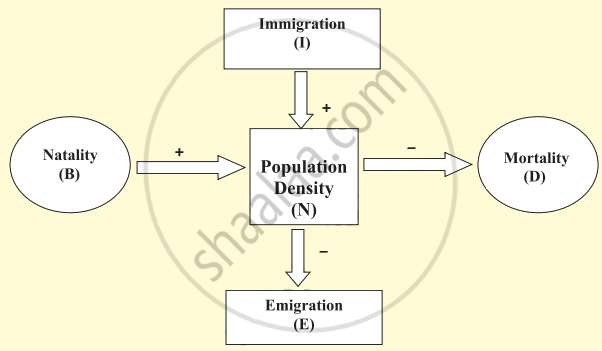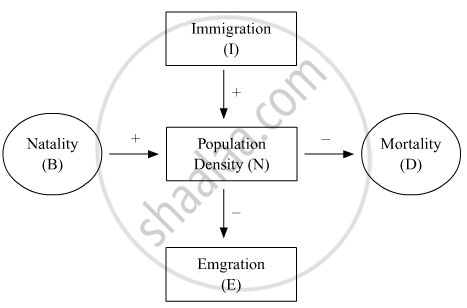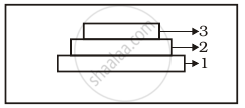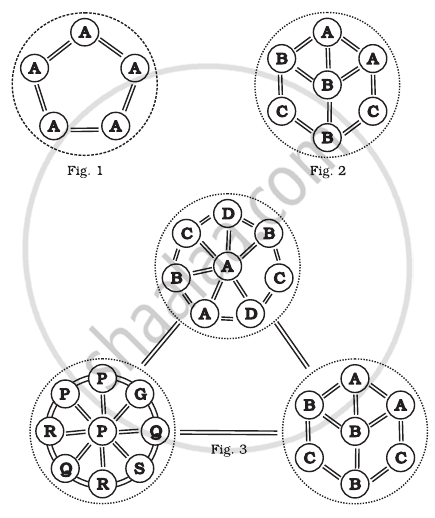Advertisements
Advertisements
प्रश्न
List the attributes that populations but not individuals possess.
उत्तर
There are some such characteristics in a population which are not found in an individual. For example, an individual is born and dies, but a population has a birth rate and a death rate. In a population, these rates are called birth rate and death rate per individual respectively. Birth and death rates are expressed as the increase or decrease in the number of members of the population. For example, if there were 20 water lily plants in a pond last year and this year 8 more plants are formed through reproduction, then at present the population becomes 28, then we calculate the reproduction rate at the rate of 8/20 = 0.4 offspring per water lily. If in a laboratory population, out of 50 fruit flies, 5 individuals perish in a particular interval (e.g. one week), then the death rate in the population in this interval will be called 5/50 = 0.1 individual per fruit fly per week. The second characteristic of the population is the sex ratio, i.e. the ratio of males and females. Generally this ratio in a population is 50:50, but it can also vary, for example, there are 60 percent females and 40 percent males in a population. In a given time, a population is made up of individuals of different ages. If the age distribution of the members of the population is plotted, then the structure formed by this is called an age pyramid. The shape of the pyramids reflects the condition of the population.
- whether it is growing
- stable or
- declining

The size of a population explains its position in the habitat. It is affected by intraspecific, interspecific competition, pesticides, environmental factors etc. In technical language, it is explained as population density. Population density is estimated in various ways. Population density (size) is not fixed for any species. It keeps changing from time to time. The reason for this is the amount of food, the difference in conditions, predation, etc. The growth of a population depends on four factors birth rate and immigration increase the population, while death rate and emigration decrease it. If the initial population is No, Nt is a time interval and I is the subsequent population, then
Nt = No + (B + I) – (D + E)
= No + B + 1 – D – E
The equation clearly shows that if the number of people born ‘B’ + number of immigrants ‘I’ (B + I) is more than the number of people dying ‘D’ + number of emigrants ‘E’, then the population density will increase; otherwise, it will decrease.

APPEARS IN
संबंधित प्रश्न
(a) Name the two growth models that represent population growth and draw the respective growth curves they represent.
(b) State the basics for the difference in the shape of these curves
(c) Which one of the curves represents the human population growth at present? Do you think such a curve is sustainable? Give reason in support of your answer.
If a population growing exponentially double in size in 3 years, what is the intrinsic rate of increase (r) of the population?
What is an age-pyramid?
Answer the following question.
What is "population" according to you as a biology student?
Study the flow chart given below and complete the equation that follows by identifying 1, 2, 3 and 4.

Nt + 1 = Nt + {(1+ 2) − (3 + 4)}
Mention the different ways by which the population density of different species can be measured.
Nutrient enrichment of water body result.
The phenomenal and rapid increase of population in a short period is called ______.
Population having large number of postreproductive and small number of prereproductive age group is called
What parameters are used for tiger census in our country’s national parks and sanctuaries?
Which of the following would necessarily decrease the density of a population in a given habitat?
Which one of the following organisms reproduces sexually only once in its lifetime?
The density of a population in a habitat per unit area is measured in different units. Write the unit of measurement against the following:
Bacteria
The density of a population in a habitat per unit area is measured in different units. Write the unit of measurement against the following:
Banyan

Label the three tiers 1, 2, 3 given in the above age pyramid.
Define ‘zero population growth rate’. Draw a age pyramid for the same.
Comment on the following figures: 1, 2 and 3:
A, B, C. D, G, P, Q, R, S are species

